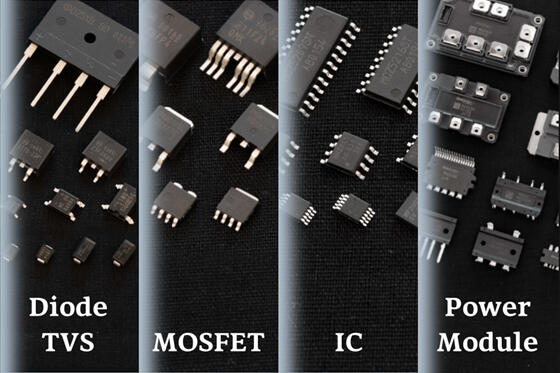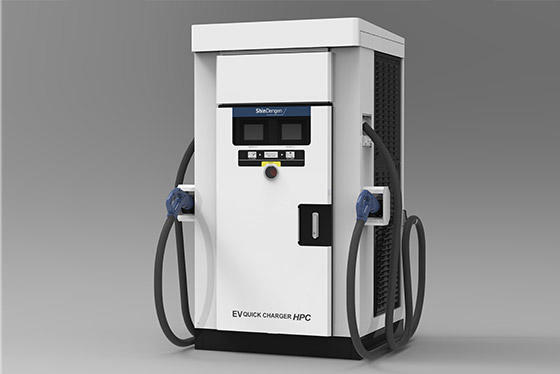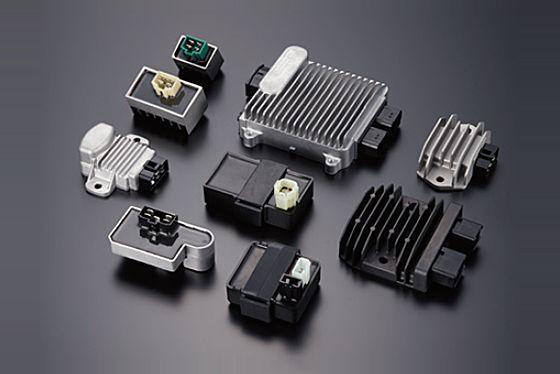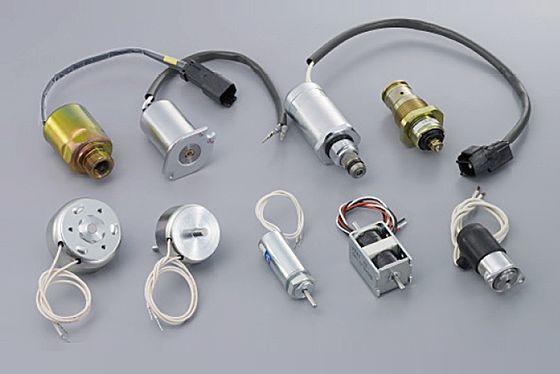What are Diodes?
A p-n junction created on silicon with electrodes is a diode. Diodes that use a p-n junction are called general rectifying diodes. General rectifying diodes with improved switching characteristics are called fast recovery diodes (FRD), which are differentiated from general rectifying diodes.
A diode that uses metal instead of a p-type semiconductor is called a Schottky barrier diode (SBD).
Forward bias
When a voltage is applied (in a forward direction) from A to K, a current flows.
At this time, a forward voltage VF occurs between A and K. A power loss occurs due to VF, and a smaller VF is ideal.
Reverse bias
Even if a voltage is applied (in a reverse direction) from K to A, a current does not flow.
However, a slight reverse current IR actually flows. A power loss occurs due to IR, and a smaller IR is ideal.
Planar Type and Mesa Type
Diode chip structure
An actual chip is made with a thin p layer and a thick n layer.
n– layer:
Since the concentration of impurities is low, the depletion layer grows more easily when there is a reverse voltage.
This concentration and thickness determine the required withstanding voltage.
n+ layer:
The concentration of impurities is high, making it easy for current to flow.
This must be thick enough in order to maintain the strength of the wafer.
When reverse voltage is applied
On an actual chip, a protective coat is used for withstanding voltage, because the end of the chip is exposed and a current flows more easily in the region from p to n+ along the end surface, lowering its ability to withstand voltage. A method must be devised to add a protective film before dicing because adding a protective film after dicing is not really practical.
There are two types of structures for adding a protective film before chip dicing
Planar type
There is no need to make a groove on the planar type, but the chip becomes bigger and the diffusion process also is complicated.
Mesa type
A process to make a groove is required on the mesa type, but the chip becomes smaller and the diffusion process also is simple.
Basic Characteristics of Diode
Static characteristics of diode
The voltage drop that occurs when the forward current IF flows is called a forward voltage VF, and a smaller VF is ideal.
In addition, the slight current that flows when the reverse voltage VR is applied is called a reverse current IR, and a smaller IR is ideal.
Dynamic characteristics of diode (switching characteristics)
As indicated in the figures below, when the diode status changes from a current flowing to a sudden reverse bias, a large reverse current surge occurs. This current is called a recovery current, and the time that the recovery current flows is called the reverse recovery time trr.
A smaller trr is ideal because the recovery current causes noise or power loss.
Diode Types
| p-n junction type |
|
|---|---|
| Schottky junction type |
|
Diodes used to all be p-n junction diodes.
However, there are also some disadvantages with p-n junction diodes. To make up for these disadvantages, fast recovery diodes (FRD) and Schottky barrier diodes (SBD) were developed. Yet, there is no special name for p-n junction diodes so they are referred to as general rectifying diodes.














